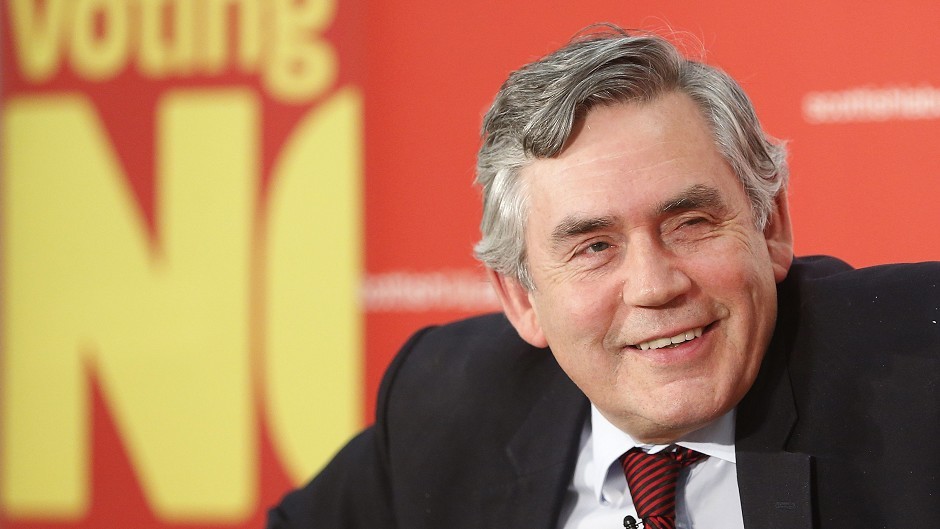Former Prime Minister Gordon Brown has claimed that the UK was being “irreversibly transformed” into a new union for the 21st century.
The Labour MP made the remark as he revealed he planned to be at the forefront of the task of devolving extra powers to Holyrood in the event of a “no” vote.
Mr Brown said he had already asked House of Commons speaker John Bercow to set aside time for a post-referendum parliamentary debate to discuss the delivery timetable.
Speaking at a Progress meeting in London yesterday, he claimed the referendum was a choice between separation and a stronger Scottish Parliament.
He said the new union would be a constitutional partnership of equals and Scotland, London, Westminster and the UK “must and will change too”.
Mr Brown said: “Many people believe that the referendum is about independence versus the status quo but nothing could be further from the truth.
“A ‘no’ vote will instead usher in further constitutional reforms.
“Now no one can ignore the basic fact that the United Kingdom is being irreversibly transformed into the new union of the twenty-first century.
“It is no longer and will never again be the all-powerful centralised unitary state of the constitutional textbooks, based on the undivided sovereignty of Westminster.”
Mr Brown said he was in favour of drawing up a statement of national purpose which reflects the 21st reality of the UK.
He added that powers should be devolved to the “maximum extent possible” across the UK.
Meanwhile, Scottish Labour is trying to persuade people who backed the SNP in the 2011 Holyrood election to reject independence.
Party leader Johann Lamont said: “Most people realise that a Yes vote and the £6billion worth of cuts that will follow will mean many of the Scottish Parliament’s most popular policies would be impossible to deliver in an independent Scotland.”
Meanwhile, Deputy First Minister Nicola Sturgeon has claimed an independent Scotland would allow Labour supporters to “reclaim their politics and their party”.
She argues that a “yes” vote was the “only real opportunity” of building a more equal Scotland.
